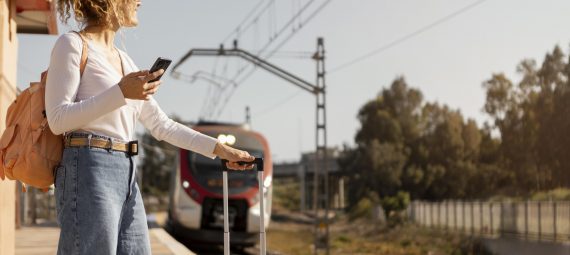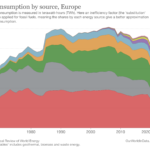Johannes Eber
This article was originally written for the “Good morning Europe” blog (www.goodmorningeurope.substack.com) by Johannes Eber. We were given permission to publish this article on the European Liberals for Reform blog.
There are two options to get more Europeans on the train and to fly less. Option number one: make flying less attractive. Option number two: make rail travel more attractive.
I prefer option number two. But improvements aren’t easy to implement.
The history of railroads in Europe is the history of national railways and national railroad companies. Every country built up its own routes. Naturally, if the country was bigger, the distances were longer; if the country was small, the distances were short. There were few cross-border rails.
And there still aren’t. Only 7 per cent of rail passenger traffic is cross-border. And the increase in total cross-border service between 2001 and 2019 is shockingly small – 1 per cent.
At the same time, Europe has changed. The continent has increasingly become a common living space. And trains have been getting faster. They can cover longer distances in shorter times.
Subsequently, we need a uniform European train network. To be able to travel quickly across Europe. To attract more passengers. Also because travelling by train is environmentally friendly. Short flights across Europe can cause up to 19 times the CO2 emissions of the equivalent train journey.
As mentioned above, changes in train traffic are happening at a snail’s pace. On the one hand, this is in the nature of things as infrastructure projects for railways are gigantic. On the other hand, there has long been a lack of European will for a uniform European rail network.
Climate change now seems to be accelerating the development of such a unified network.

The EU Commission has long spoken about revolutionising European rail travel. It set a target to double high-speed rail traffic by 2030 and triple it by 2050. This week the Commission specified how it intends to achieve these goals.
The Commission‘s vice-president Frans Timmermans presented the proposals (the bloc’s 27 member states must agree on). This is what the EU Commission would like to implement:
- Cheaper tickets: The Commission will issue guidelines in 2023 on the setting of track access charges faced by rail companies. The goal is to lower these charges to boost affordable cross-border travel. For the same reason, the Commission is looking at a VAT exemption for international rail tickets.
- Improved ticketing: The Commission announced a “multimodal legislative” proposal in 2022. Its aim is to make planning and booking cross-border train trips “easier and more user-friendly, enabling passengers to quickly find the best available ticket at the best price, with better protection when a journey is disrupted”. How is that supposed to work? This is what the EU Commission says: “This initiative aims to improve data exchange between mobility providers and facilitate the conclusion of commercial agreements between railway undertakings and third-party ticket sellers, in this way boosting the availability of train tickets. This would also make it possible for passengers to buy a ticket for journeys that combine train travel with local public transport and other mobility options.”
- Make travelling faster: A new speed requirement shall be introduced by 2040. Then trains on a so-called core network should travel at least 160 km/h. The term “core network” is important here. The Commission doesn’t want to adapt the entire rail network. The European rail network currently has a length of almost 120.000 km. The core network defined by the EU Commission comprises a little more than half of the entire net (65.000 km). The map above shows the planned European core transportation routes. However, the map also includes roads and waterways. I did not find an explicit designation of railways in the material provided by the EU Commission.
- Standardisation of European rail rules: The commission announced a revision of the specifications for interoperability and a regulatory framework for train drivers.
- Lending programme: The European Investment Bank (EIB) is launching a lending programme for rail companies who wish to purchase rolling stock. The so-called Green Rail Investment Platform (GRIP) will support sustainable rail investment in infrastructure, rolling stock and digital systems (see promotional video from EIB below).
Will cross-border train traffic increase rapidly with these measures?
I am sceptical. As is known, national governments, not the Commission, decide on high-speed rail projects. Though national governments prefer to spend their money on domestic routes rather than cross-border routes. Why? Because more citizens of that country benefit from domestic routes than from cross-border routes. The beneficiaries of cross-border routes are partly citizens of another country. The European Commission is trying to counter this with incentives for cross-border rail expansion. But that’s not easy. Furthermore, national train companies tend to use regulatory barriers to keep competition from their rail network. – At least, there is still a lot of work waiting for the EU Commission.
Author Profile

-
Founder of the "Good morning Europe blog" and Pixel economist
Guest author for European Liberals for Reform
Johannes' articles are originally written for the “Good morning Europe” blog (www.goodmorningeurope.org) and the Pixel economist (https://thepixeleconomist.substack.com).
We were given permission to publish his articles on the European Liberals for Reform blog.
Latest entries
Post Disclaimer
The opinions expressed by the author of this post do not necessarily represent the opinions and policies of ELfR.




